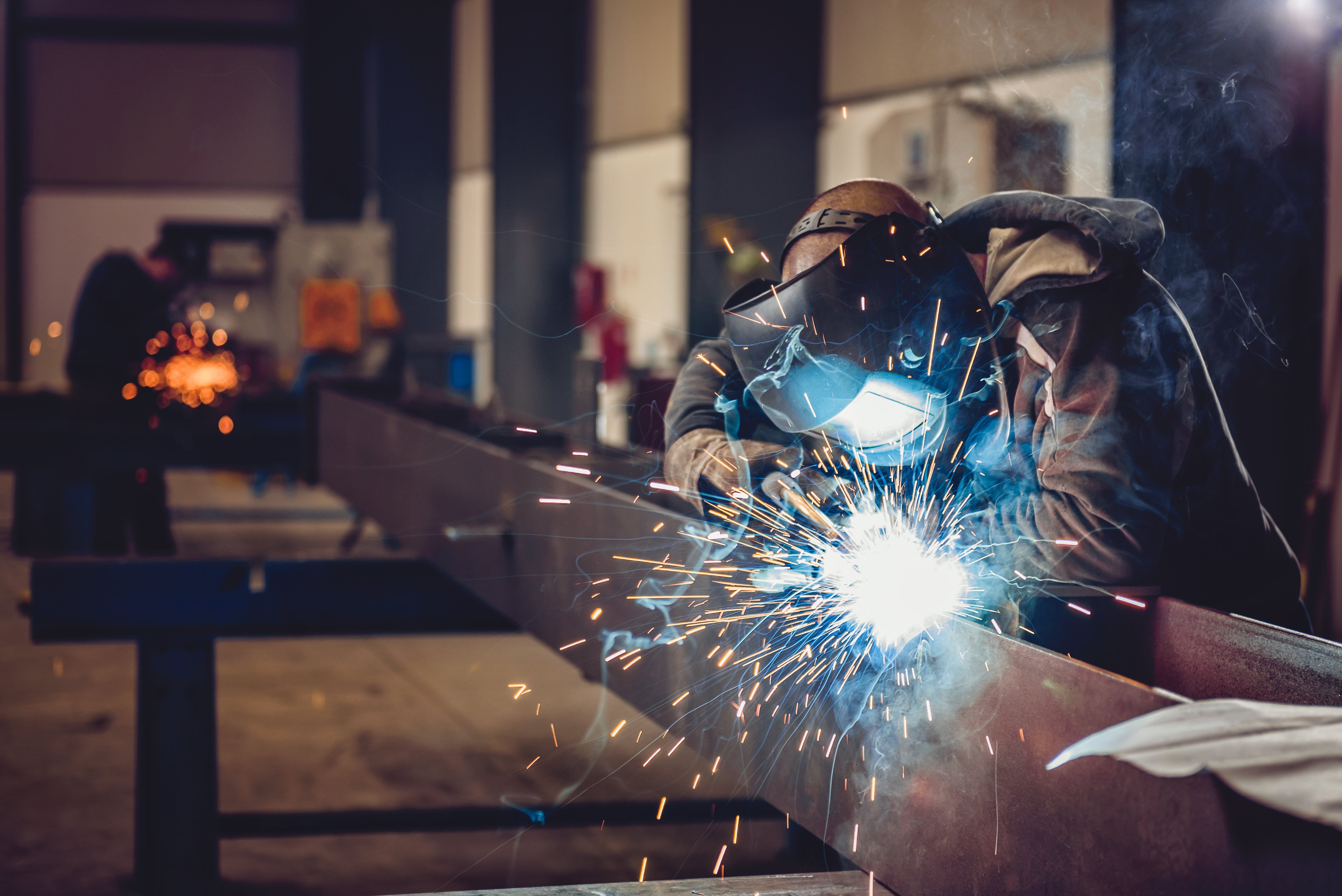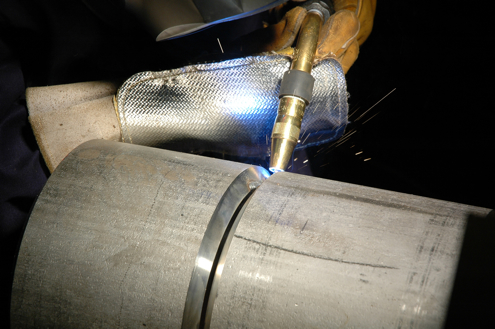Typical Welding Fixing Issues and How to Address Them Effectively
Welding repair work frequently run into a series of issues that can threaten the honesty of the end product. Typical issues include inadequate penetration, porosity, and imbalance, to name a few. Each defect presents one-of-a-kind difficulties that need particular approaches for resolution. Recognizing these problems is essential for welders intending to improve their end results and skills. This discussion will certainly discover these common welding fixing problems and efficient methods to resolve them.
Poor Penetration
Poor penetration takes place when the weld steel stops working to completely fuse with the base material, resulting in weak joints and potential architectural failings. This problem usually comes from inadequate heat input, wrong electrode angle, or improper welding rate. Welders might come across inadequate infiltration because of a miscalculation of the needed criteria for a particular product thickness or kind. Furthermore, contamination on the base material's surface can prevent effective bonding, aggravating the problem. To address poor infiltration, welders should ensure proper settings on their tools and preserve a clean work surface. Routine evaluation of welds is suggested to determine any type of deficiencies early, permitting prompt improvements and the prevention of endangered structural integrity in bonded assemblies.
Porosity
Porosity is a typical flaw in welded joints that manifests as small gas bubbles entraped within the weld steel. This flaw can endanger the honesty of the weld, resulting in reduced toughness and potential failing under anxiety. Belgrade Welding. Porosity usually emerges from contamination, moisture, or incorrect welding strategies, which enable gases to get away into the liquified weld swimming pool. To attend to porosity, welders ought to ensure appropriate surface area prep work, maintain a tidy workplace, and make use of appropriate welding specifications. Furthermore, picking the right filler material and securing gas can minimize gas entrapment. Routine evaluation and testing of welds can assist determine porosity early, ensuring timely corrective activities are taken, consequently maintaining the quality and integrity of the welded structure
Misalignment
Imbalance in welding can develop from various variables, consisting of inappropriate arrangement and thermal expansion. Comprehending the root creates is necessary for effective resolution. A number of modification strategies are available to straighten parts and guarantee structural honesty.
Reasons for Imbalance
Welding misalignment commonly originates from a range of underlying concerns that can compromise structural integrity. One main reason is incorrect fit-up of parts before welding, which can result in gaps and irregular surfaces. Variations in thermal development during the welding process can additionally lead to distortion, especially if the materials being signed up with have various coefficients of development. In addition, inadequate clamping and fixturing might stop working to hold components securely in position, resulting in movement during welding. Badly kept devices, including welding makers and devices, may present disparities in the weld bead, more adding to imbalance. Driver mistake, stemming from insufficient training or experience, can likewise play a considerable duty in developing misaligned welds.

Adjustment Techniques Readily Available
Dealing with misalignment effectively needs a combination of restorative techniques tailored to the particular concerns at hand. One typical approach is using components or jigs to hold elements in the proper position during welding, ensuring regular positioning. Furthermore, preheating the products can help in reducing distortion and improve fit-up. For substantial misalignment, mechanical adjustment methods, such as utilizing hydraulic jacks or clamps, can be utilized to deal with the position prior to welding. Post-weld warmth therapy may likewise be required to alleviate tensions brought on by imbalance. Careful assessment and change throughout the arrangement stage can avoid imbalance issues from becoming considerable problems, advertising a smoother welding procedure and improving general structural integrity.
Distortion
Distortion is an usual difficulty in welding that can arise from various factors, including uneven heating and air conditioning. Understanding the reasons for distortion is essential for executing effective prevention strategies. Addressing this issue not just improves architectural honesty however additionally boosts the general high quality of the weld.
Reasons for Distortion
When subjected to the extreme warm of welding, materials usually undergo changes that can result in distortion. This sensation mostly develops from thermal growth and tightening during the welding procedure. As the weld location heats up, the material increases; upon cooling, it acquires, which can create inner tensions. In addition, uneven home heating throughout a workpiece can exacerbate these tensions, leading to warping or flexing. The type of product likewise plays a substantial role; metals with differing thermal conductivity and coefficients of expansion may respond in different ways, bring about unpredictable distortions. Poor joint layout and inadequate fixturing can contribute to misalignment throughout welding, enhancing the probability of distortion. Understanding these reasons is essential for efficient welding repair work and avoidance techniques.
Avoidance Techniques
Efficient prevention techniques for distortion throughout welding concentrate on managing heat input and making sure correct joint style. Keeping a constant heat input assists to lessen thermal expansion and contraction, which can cause distortion. Using strategies such as preheating the work surface can also lower the temperature level slope, promoting uniform heating. Furthermore, choosing proper joint designs, such as T-joints or lap joints, can improve security and minimize anxiety focus. Applying appropriate fixturing to safeguard the workpieces in position even more aids in maintaining alignment throughout the welding procedure. Ultimately, staggered welding sequences can disperse warm more evenly, stopping local distortion. By applying these techniques, welders can greatly lower the possibility of distortion and boost the general top quality of their welds.
Splitting
Cracking is a common issue come across in welding fixings, usually arising from numerous variables such as incorrect cooling rates, material option, or inadequate joint prep work. The occurrence of cracks can significantly jeopardize the honesty of the weld, leading to possible failings throughout procedure. To address this problem, welders have to initially analyze the origin, making certain that materials are suitable and suitably picked for the certain application. In addition, regulating the air conditioning rate during the welding procedure is vital; rapid cooling can cause stress and cause fracturing. Correct joint design and preparation likewise add to decreasing the risk. Executing these approaches can improve weld high quality and longevity, eventually minimizing the likelihood of fracturing in finished weldments.

Insufficient Blend
A considerable concern in welding fixings is insufficient fusion, which takes place when the weld steel does not adequately bond with the base product or previous weld passes - Fabrication. This flaw can lead to weaknesses in the joint, Find Out More possibly jeopardizing the integrity of the welded framework. Factors adding to incomplete combination include inadequate heat input, inappropriate welding method, and contamination of the surface areas being signed up with. To address this issue effectively, welders ought to guarantee proper pre-weld cleansing and surface preparation, in addition to adjust their welding criteria to attain sufficient penetration and fusion. Normal evaluation during the welding process can additionally assist determine incomplete blend early, enabling prompt restorative steps to boost the overall high quality of the weld
Overheating
While welding repair work can enhance structural integrity, overheating presents a significant difficulty that can lead to material destruction. Too much warm throughout welding can alter the mechanical residential properties of steels, leading to reduced stamina, increased brittleness, and warping. This sensation is particularly vital in high-stress applications where architectural dependability is critical. Determining overheating can include aesthetic assessments for staining or distortion, along with monitoring temperature during the welding process. To minimize the dangers linked with overheating, welders need to use suitable techniques, such as controlling warmth input, changing traveling speed, and utilizing appropriate filler products. Furthermore, applying pre- and post-weld heat therapies can aid recover product homes and boost the overall quality of the fixing, see post ensuring long-term performance and safety.
Frequently Asked Questions
What Are the Usual Indications of a Welding Defect?

Just How Can I Test My Welds for Quality?
To evaluate welds for quality, one can utilize visual assessments, ultrasonic screening, and radiographic approaches. Each technique guarantees structural stability, determines issues, and validates adherence to defined standards, ultimately boosting the dependability of the welded joints.
What Security Preventative Measures Should I Take While Welding?
When welding, one need to focus on safety and security by wearing suitable personal safety tools, making certain correct ventilation, protecting combustible products away, preserving a tidy work space, and being mindful of surroundings to avoid injuries and accidents.
Can I Fix a Weld Without Renovating the Entire Joint?
Fixing a weld without remodeling the entire joint is feasible, depending on the damages (Montana Mobile Welding and Repair Fabrication). Strategies such as grinding, adding filler material, or making use of a welding procedure can efficiently deal with specific problems while maintaining the surrounding framework
What Devices Are Important for Reliable Welding Repair Works?
Crucial tools for efficient welding repair work consist of a welding device, cord brush, grinder, protective equipment, clamps, and filler materials. Each device plays a crucial function in guaranteeing quality and safety throughout the repair work procedure. Porosity generally arises from contamination, wetness, or inappropriate welding methods, which enable gases to run away into the liquified weld swimming pool. Poorly maintained equipment, including welding devices and tools, may introduce inconsistencies in the weld bead, additional adding to misalignment. When subjected to the intense warm of welding, products usually undertake changes that can lead to distortion. Splitting is a typical issue encountered in welding fixings, usually resulting from numerous variables such as inappropriate air discover here conditioning rates, material selection, or inadequate joint prep work. A considerable issue in welding repair work is insufficient fusion, which occurs when the weld steel does not properly bond with the base product or previous weld passes.
Comments on “Reliable fixes for poor fusion from Montana Mobile Welding and Repair”